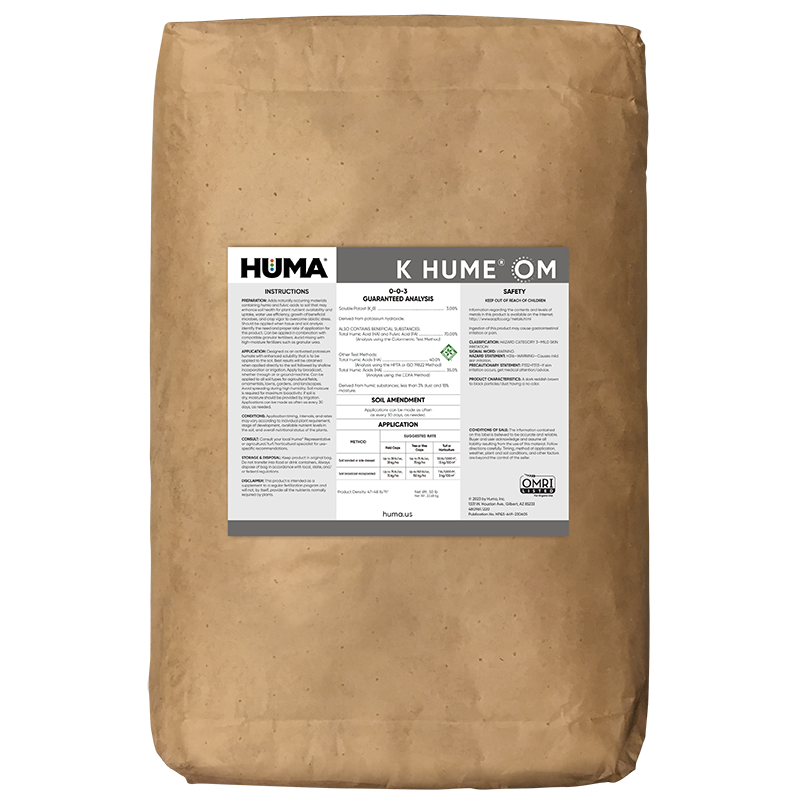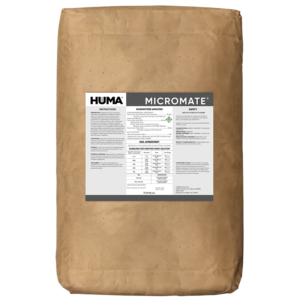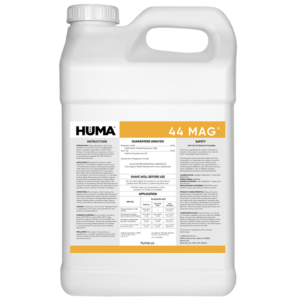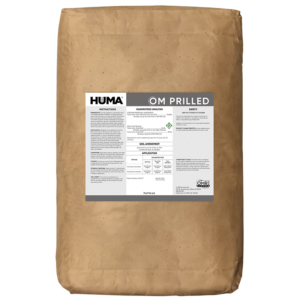K HUME OM
Benefits of Use:
- Uniform granular size promotes even coverage/distribution of humic/fulvic acid for short-term carbon benefit
- With the potassium coating, becomes a short-term soil organic-matter builder
- Increased water penetration
- Increased flocculation of clays
- Promotes conversion of fertilizer into plant-available food
- Increases soil nutrient mineralization
- Short-term soil microbial activation
FAQs
Related Videos
Huma Minute – Huma K-Hume OM with Barrett Smith
Huma Agronomist Barrett Smith discusses K-Hume OM and how it differs from a regular granular humic product.
Learn More
Huma Minute – What is Humic Acid with Cory Ritter
Huma Mid-West Regional Sales Manager Cory Ritter discusses the different types of humic acids and what they do for your plants.
Learn More
Huma Minute – Humate Application Rates with Cory Ritter
Huma Mid-West Regional Sales Manager Cory Ritter discusses humate application rates and why there is not a one-size fits all rate.
Learn More
Related Products
Related Case Studies

Humic Products Increase Soybean Yield In Iowa
Background Scientific research shows humic and fulvic acids can have a biostimulant effect on plant root growth and mass, nutrient availability and uptake, and crop yield and quality. Objective The objective of this study was to compare and contrast the immediate effects that three types of humic products from Huma®, Inc., have on soybean yield.

Humic Products Increase Iowa Corn Yield
Background Scientific research shows humic and fulvic acids can have a biostimulant effect on plant root growth and mass, nutrient availability and uptake, and crop yield and quality. Objective The objective of this study was to compare and contrast the immediate effects that three types of humic products from Huma®, Inc. have on corn yield.
Related Blog Posts

This Week In Ag #101
Ask yourself this. Would you really want to be on the other side of a trade dispute with the USA? With all the hysteria over tariffs, that’s a question few seem to be asking. In the global economy, the good ole USA remains the 700-pound gorilla. Boasting a GDP over $25 trillion, the US economy is nearly

Introducing New Humic Conversations Video Series
We are excited to introduce our new educational project, the Humic Conversations Video Series. As the name suggests, each episode of the series will focus on humic substances. Two leading researchers from our Humic Research Lab. Dr. Rich Lamar and Dr. Hiarhi Monda will share their expertise with the viewers. In Episode 1 of this

Nothing in Farming Is Ever Easy
Circa late-1990s. I was sitting at Inness Farm Supply, a plate of BBQ on my lap, listening to the Monsanto rep carry on about the advantages of Roundup Ready Corn. After hearing all the benefits, I asked THE question. “Won’t this accelerate weed resistance?” She looked at me like she wanted to summon security. Then she emphatically assured the group that resistance was not a possibility. I just smiled and replied that nature always finds a way. It did. In 2000, resistant horseweed was discovered on the East Coast. Today, 18 weed species across 38 states are resistant to glyphosate, the active ingredient in Roundup.






